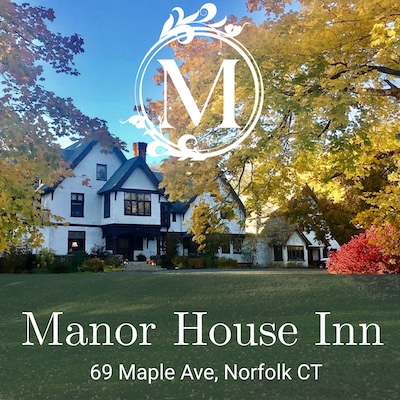July 1, 2016
The Harts Gallery presents an exhibition of work by legendary British photographer Martin Parr, who takes an anthropological and satirical approach to his images.
Martin Parr is a British documentary photographer, photo- journalist, and photobook collector. He is known for documenting the social classes of England. With about 40 solo photobooks published and with 80 exhibitions worldwide—his work has been exhibited internationally in countless museums and galleries, including the Tate Modern, London; the Louvre, Paris; the Haus de Kunst, Munich; the Sprengel Museum, Hannover; Barbican Art Gallery, London; Danziger Gallery, New York; Janet Borden Gallery, New York; and Aperture, New York. He still finds time to be president of Magnum Photos, a photographic co-operative that provides photographs to the press, publishers, advertising, television, galleries and museums across the world.
Martin Parr’s enthusiasm for photography began when he was fourteen. His grandfather George Parr, an amateur photographer, was an early influence. Martin says of his own work, “I make serious photographs disguised as entertainment. That’s part of my mantra. I make the pictures acceptable in order to find the audience, but deep down there is actually a lot going on that’s not sharply written in your face. If you want to read it, you can read it.”
Parr’s exhibition at the Harts Gallery in New Milford —guest curated by Tealia Ellis Ritter—is titled Strange Paradise. Featured in the show is work from several of Parr’s series dating from the 1980s through today, including a number of images from The Last Resort. Though the photographs bridge multiple subjects and almost a quarter of a century of image-making, the theme of leisure emerges again and again, in the settings depicted, the attire worn and the food consumed. The dynamic nature of Parr’s compositions creates icons out of the mundane, but behind these symbols of modern life there is an awareness of the ephemeral nature of the Now. In time, food, fashion and even our concepts of pleasure will evolve. The images will remain as artifacts of this specific moment in the ever-changing human narrative. Following is a conversation Parr had with Carmen Lopez Abramson, co-director of the Harts Gallery and photographer Tealia Ellis Ritter:
What inspires you as a photographer to get out every day and photograph?
I don’t do pictures every single day, in fact, because I have a lot of other things I have to do. I want to get out there as much as possible because this is a crazy place and it needs to be documented and interpreted.
What do you feel your role as a photographer is?
Well, to try and make sense of the crazy world we live in and to shape and form it into some kind of different projects in the form of books and exhibitions, etc.
What makes a subject interesting to you?
All subjects are interesting. I just don’t have the time to do them all. I like to go anywhere. I mean people send me anywhere and I can find photographs anywhere. I have specialisms like UK and tourism and such like, but I have done a lot of work in America.

You have discussed the democratic nature of photography; can you elaborate on that concept?
Well, everyone is a photographer now, if everyone does it? It’s the most wide spread art form on the planet. And of course, now we have all the platforms on the internet where people can share these pictures. That’s awful, but in that sense, it is an absolute global phenomenon.
Yeah. Which makes it more difficult to make it as a photographer in a way.
Not so, because if you’ve got something to say and you are good at it, then people will notice. You know, I am a curator as well so I am constantly looking for new interesting people to emerge. Then I can do things with them. I can exhibit them, I can show them, I can promote them.
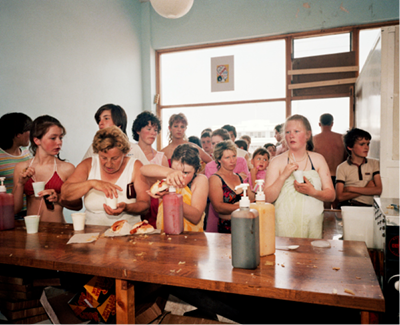
Well that’s good to know. What makes an image successful to you?
It’s an intuitive thing as to whether an image works or not. It’s very difficult to describe but usually there’s some kind of tension or some kind of story that will evolve as of that. A contradiction and an ambiguity well expressed.
Many of your images are people in public spaces, seemingly unaware of your presence, how do you approach your subjects?
With stealth. Also, what you don’t see is all the pictures where people are looking at me—and they don’t work.
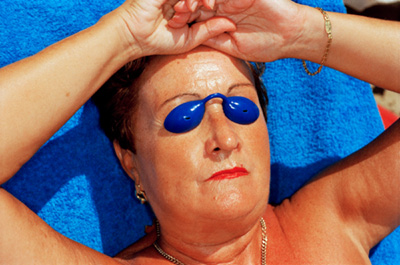
If you were to describe a human to a being not from this planet, what would you say?
I would say that we are all different tribes and you have to look at the tribes and try to understand them before you try to constitute the planet that we live in.
Have you noticed any changes in humans since you started photographing?
Well, some behavioral things like how we handle the internet and smart phones. And the world is becoming wealthier, more problematic, and more globalized. Other than that, it is what I am saying.
So as the world is getting wealthier, it’s become more problematic?
Yeah, I mean one of the issues we have is global warming, too much… you know, we’re too wealthy. There’s too much money in the world. It would destroy it. Like all the values you have in America, everyone else wants now and it’s unsustainable.
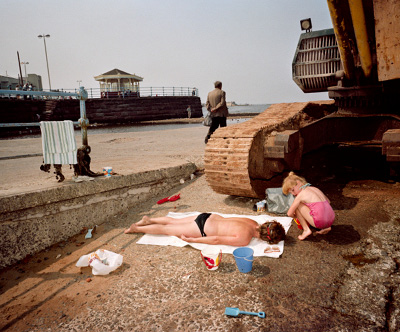
I am from Peru and we have a powerful indigenous race with beautiful rich black hair, high cheekbones and dark eyes. I’ve noticed that a lot of the women dye their hair blond to look like the American women from Sex and the City. When I visit, instead of taking me to the amazing Peruvian restaurants, they take me to TGIF.
Oh, Heaven forbid, yeah.
I agree completely with you about other countries desiring the American values. Ok, so let’s get philosophical. What are you trying to understand or get to with your obsession of the contemporary world?
Photographing is partly therapeutic and partly a way of revolving and trying to understand your own relationship to the world we live in.
Are you getting close to understanding that?
No, I never really expect to. Just the documentation of the things I’m interested in is building up into, I hope, a substantial archive, which will be partly my legacy.
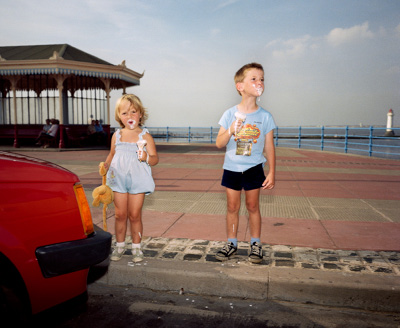
What is the function of photography in contemporary western and globalized societies?
It can tell us a lot about who we are and the personal obsessions that we all have and it’s a very good way of throwing light about the world through the subjective opinions of photographers.
There have been so many changes in the past 2 decades within the medium of photography and the larger visual culture with the introduction of digital technology. What would you like to see happen in the next 20 years within the world of photography?
I guess recognition of photographers’ global status. That’s always more welcome. I mean more people buying photographs that therefore support photographers, especially emerging ones. Those two things.
You are an avid collector of photo books. How do you distinguish between the world of the photo book and for instance an individual’s Instagram page or website?
Well, ultimately, the book is what you want because it has a series of pictures. I mean you could have a one-off picture that could work but the most satisfactory way of viewing photography is through a body of work. All the images and all the bodies of work that we remember are the ones that really move us.
Do you think the current obsession with people photographing anything and everything on their phones will end anytime soon?
No, I think it’ll just continue to grow.
How do you feel about selfie sticks?
Love them. I’ve done a whole series on selfie sticks. I mean I photograph them, I don’t have one myself. I don’t really use a smartphone apart from recording a book when I see one in a museum or a shop that I haven’t bought that I must go and buy.

Do you see any changes in the role of a gallery in the art world and if so, how do you think that’s going to affect emerging photographers?
It’s tough to sell emerging work but those people who are bold enough to see the potential of someone’s talent, then it can be very well rewarded with great pictures for a very reasonable price. I don’t know much about the market place in the American small town or small cities selling photography. I mean, partly you’re there must mean you must be able to sell something, so that’s a good sign.
What photographic moment will you most remember on your deathbed?
I suppose photographing in the UK would be probably my best subject matter. I guess if I had to think about one moment, it’s when I discovered New Brighton had the color camera for the first time or color film for the first time. That was very exciting to know that you’re onto something that was interesting.
I have a crazy life which isn’t a bad thing is it?
To see more of Martin Parr’s work, go to his web site:
martinparr.com
The exhibition Strange Paradise will run from July 2 to August 27, 2016 at the Harts Gallery. Reception is on Saturday, July 9, 5 – 8 pm
Harts Gallery
20 Bank Street
New Milford
917.913.4641
thehartsgallery.com



















